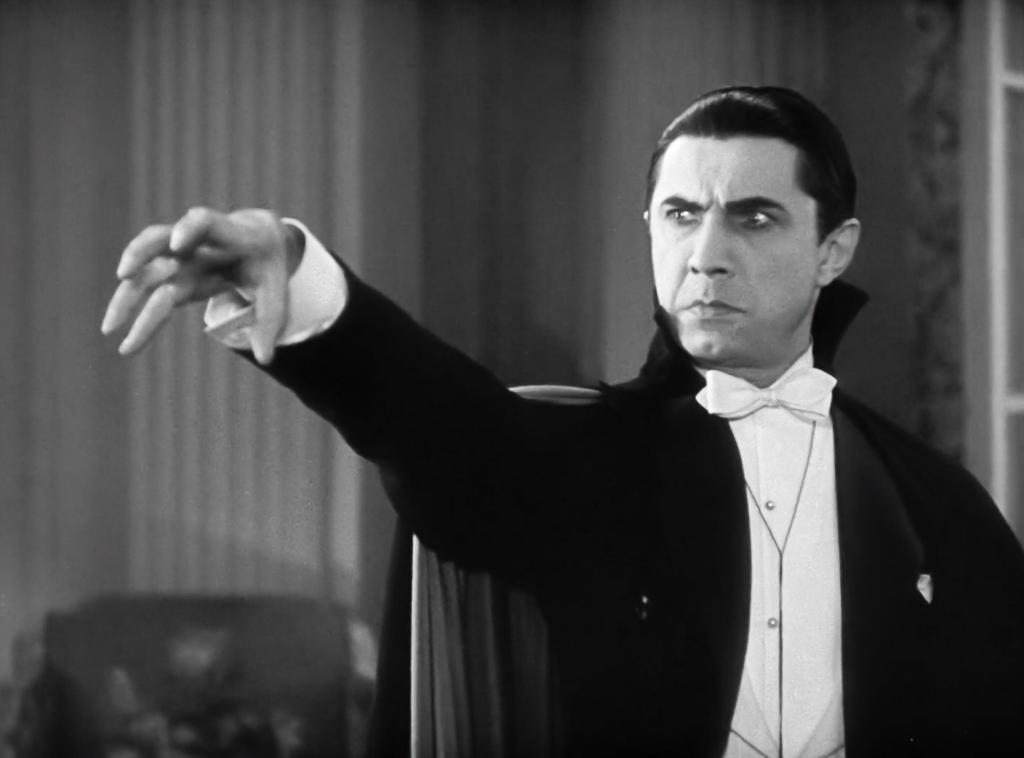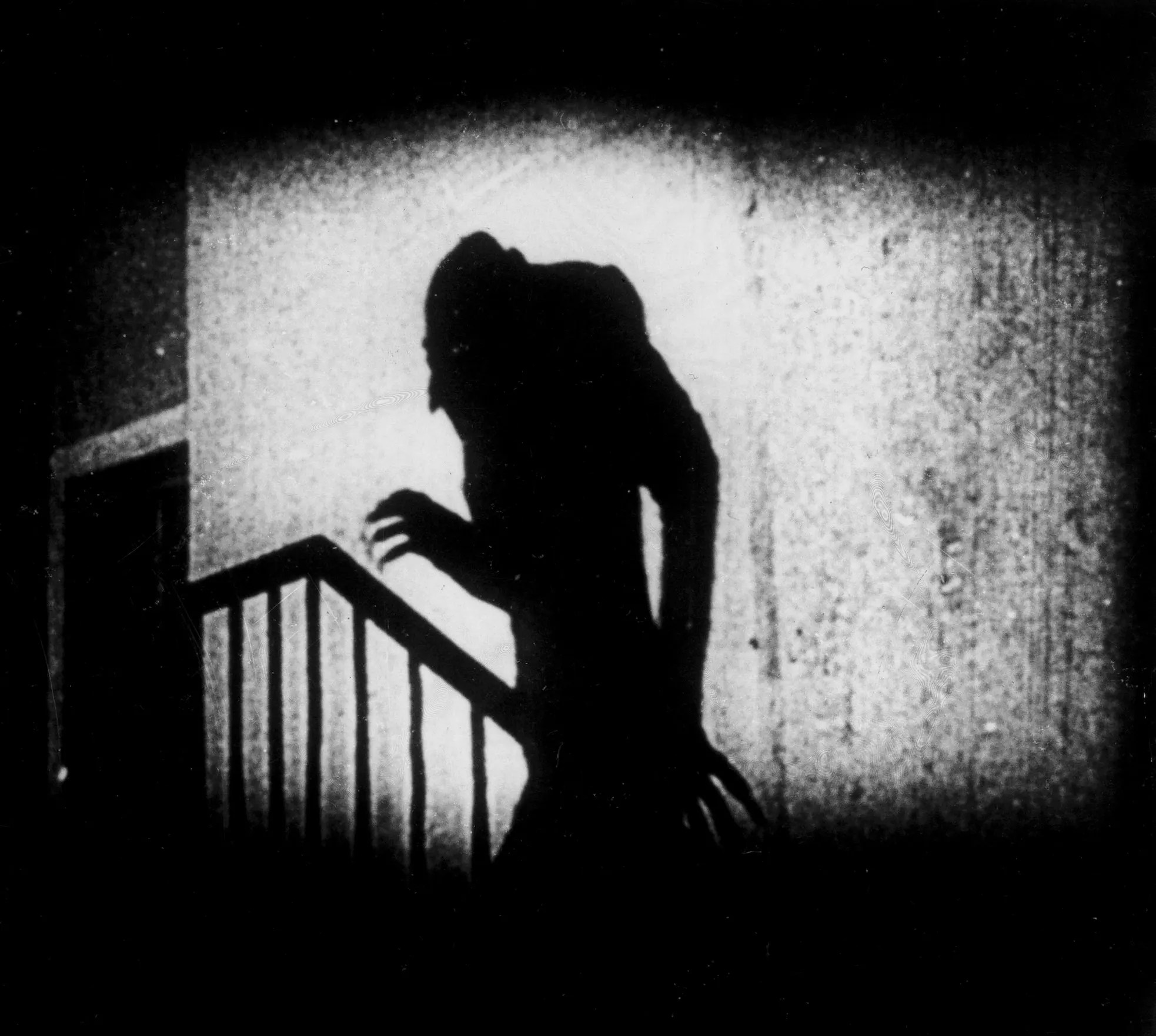He is completely bald but his eyebrows are grotesquely hirsute; his ears and chin are both weirdly elongated, as are his bony fingers; and as he creeps up the stairs towards the bedroom of a young woman in white, his hunched frame casts a sinister shadow. Count Orlok in Nosferatu is as instantly recognisable a cinematic figure as Charlie Chaplin, Mickey Mouse or Superman.
The F.W. Murnau silent film that created this image (and found itself at the centre of a copyright battle with the estate of Dracula author Bram Stoker) is celebrating its 100th anniversary this year. It continues to be regularly screened, showing at two different cinemas in London alone in the run-up to Halloween.
But years before I saw it, my first proper experience of the Count Dracula story was musical rather than cinematic: ‘The virginal brides file past his tomb / Strewn with time’s dead flowers / Bereft in deathly gloom / Alone in a darkened room, The Count.’ These are lines from ‘Bela Lugosi’s Dead’, the 1979 debut single by Bauhaus that is widely recognised as the first record in what would become a 1980s music scene sub-genre.
Yes, I was a teenage goth. Even 40 years on, I feel slightly embarrassed to admit this publicly. Because from that still brilliant post-punk evocation of dark horror the goth scene went downhill very quickly, and soon became associated with terrible provincial bands with backcombed purple hair. But my experience of ‘goth’ did lead to a wider interest in the whole idea of the gothic – and the eventual discovery that ‘Bela Lugosi’s Dead’ was a revival of a revival.
The original Goths weren’t wearing fishnet tights and listening to the Sisters of Mercy but were one of those Germanic tribes, like the Hun, who hastened the final collapse of the Roman Empire in the 4th and 5th centuries AD. Their name then became attached to a medieval school of art and architecture seen in churches and cathedrals across Europe before being superseded by the Renaissance.
Something about those exaggerated, monochrome sequences visually describes the gothic idiom more perfectly than anything since
It wasn’t until the late 18th century that the term began to take on its modern association with darkness, mystery and horror. A Gothic Revival architectural movement – celebrating the arcane charm of the medieval – in the early 1700s fed into the atmosphere of some early novels. Horace Walpole’s proto-horror The Castle of Otranto of 1764, for instance, was eventually subtitled ‘A Gothic Story’.
Then along came the Romantics – and Mary Shelley with Frankenstein – and that mood of darkness became a literary fashion that was everywhere, from the Brontës to Edgar Allan Poe, right through Victorian fiction. It wasn’t until the end of the 19th century that Stoker published Dracula, and the novel was just 25 years old when Max Schreck gave that original turn in Nosferatu in 1922.
Although Schreck’s vampire remains strikingly recognisable, it was Lugosi in 1931’s Dracula who set the template for what the Count would look and seem like in the many subsequent retellings: more an urbane man than Nosferatu’s barely human monster. Yet perhaps the more crucial distinction between these two early versions of the vampire myth isn’t stylistic but technical: Nosferatu was a silent film, Lugosi’s Dracula a talkie.

The latter is well worth seeing, as are other 1930s horrors starring Lugosi, often paired with Boris Karloff: The Black Cat, The Raven, Son of Frankenstein, White Zombie, The Body Snatcher, Murders in the Rue Morgue. But something had been lost in giving the vampire a voice.
For me, the most perfect expression of gothic horror came in the great silent films of the 1920s. It seemed to suit the then new medium: as well as Nosferatu there was The Cabinet of Dr Caligari, The Hunchback of Notre Dame, Dr Jekyll and Mr Hyde, The Golem, The Phantom of the Opera, The Phantom Carriage and numerous others.
Without recourse to dialogue to tell the story, filmmakers such as Murnau had to rely on facial expression and physical movement, on darkness and light and the shadowplay in between – and something about those exaggerated, monochrome sequences visually describes the gothic idiom more perfectly than anything since.
Modern horrors do tend to overload the blood and gore at the expense of the sinister slow-build. I think of the Friday the 13th films that I would have been watching at around the same time as my Bauhaus fandom. They are so formulaic they lend themselves to pastiche: see the Scream spoofs. And they then either evolve into repetitive, self-referential franchises – such this month’s Halloween Ends, the latest incarnation of the Halloween series which comes 44 years after the original – or they build out into crazy storylines in some mad attempt to transcend the conventions of the genre, such as in The Cabin In The Woods. The stark tone of gothic is lost.
Of course there are exceptions: Let the Right One In, 2008’s chilly and chilling Swedish reimagining of the vampire legend, found a way to make the gothic modern. But, broadly, give me the horrors of the silent era over this schlock any day.
If you want to sample silent horror this Halloween, though, you may struggle. While Nosferatu is widely available, including on Amazon Prime, many of its 1920s contemporaries can be hard to find on streaming services. Which is why I am to this day a member of one of those DVD rental clubs that most normal people stopped using 15 years ago. ‘I still order DVDs by post’ is another thing I am slightly embarrassed admitting publicly. But I’ve yet to find any other way to see many non-mainstream films. Cinema Paradiso can get almost anything.
And it seems a fitting way to explore this particular genre. It’s almost like some medieval manuscript holding strange and scary secrets in an M.R. James story: this archaic medium, the DVD disc, arrives by archaic means, the post, and leads to a terrifying encounter with a vampire, an opera phantom or a golem.







Comments